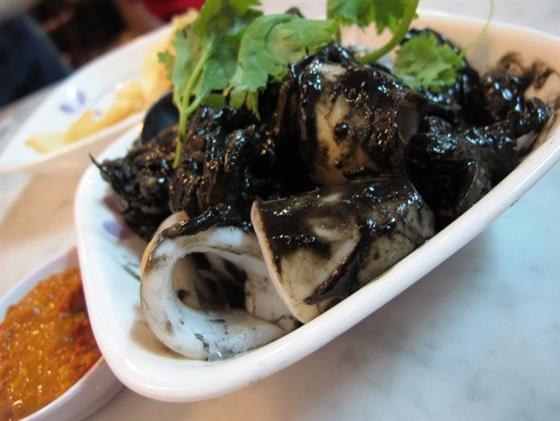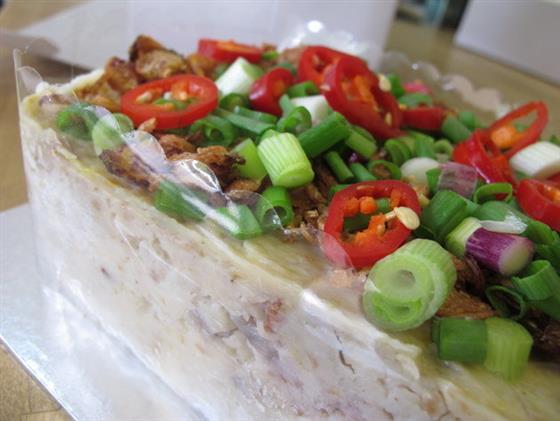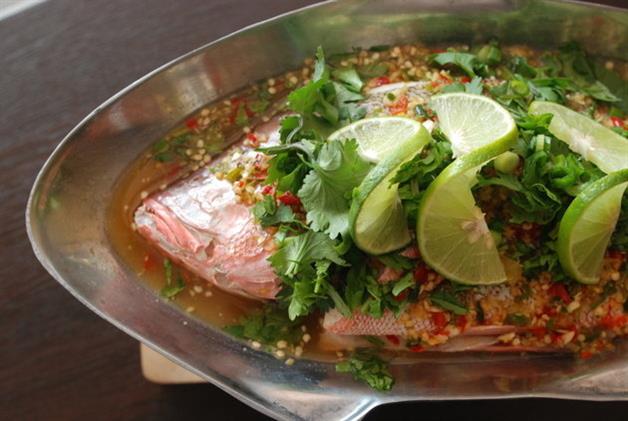
Colours That Affect Your Appetite
By Tris Marlis - Wednesday, Feb 13, 2013
Imagine yourself walking into a kopitiam, welcomed by the clanking sounds of the wok, the aroma of pork lard or spices in the air, the sight of a plate of char kway teow garnished with fresh spring onion on top, the anticipatory spiciness in the noodles, teasing you to begin the degustation. Dining is all about stimulating the five senses, and it often starts with the eyes, the look of a dish is as important as its taste, it needs to be inviting and it has to stimulate our appetite for us to take that first sinful bite. The key to a perfect looking dish is colour.
Chef Moon of Mikuni, Fairmont Singapore, believes that “diners eat with their eyes first so when food is attractively presented with flourishes of rich colour, it helps to stimulate one’s appetite.” The choice of colours start from the moment Chef Moon picks up ingredients for his dish to plate and garnish. “There is a lot of green, red, yellow and purple in my garnishes as they are bright and eye catching,” says Chef Moon. His favourite colour is green, as he says it symbolises freshness and helps brighten and enliven the look of any dish, giving it a “healthy” touch. Same effect as the spring onion on your plate of char kway teow.

Chef Jonathan Koh from A Thousand Tales named red his favourite colour to work with – think red meat, tomato, red pepper and blood orange. Red, according to colour psychologists, is a colour that makes people hungry. It attracts attention instantly and increases heart rate, creating excitement. Besides using red-coloured ingredients in cooking, food companies also like to use red as packaging or branding, some examples include McDonald’s and Coca-Cola.

For food stylist, colours play even crucial role as they can only rely on visuals to stir appetite. Besides green and red, Sawarto of Food Stylist Singapore also likes to utilise yellow in his photoshoot, “I call them (red, green, yellow) the capsicum colour, they are captivating, I always try to include them. That’s my personal rule of thumb,” says Sawarto. To further enhance the bright colours, Sawarto uses a white backdrop. The same applies to restaurants, and perhaps the reason why most of them use white plates, which is to create a harmonising contrast.
Other colours, like black and blue are known as the appetite suppressants. These colours are rarely seen as natural colour of food, people often associate black and blue with toxic, burnt food or mold. “That’s the reason why not everyone can accept Squid Ink Pasta,” says Chef Koh. While for Chef Moon, he says black “reminds me of burned food. I think black is the opposite of freshness and doesn’t give a fresh and lively look to a dish.” A recent study in United States also recommended eating on a blue plate to lose weight.

Are you aware of these colour cues? Next time when you are preparing a dinner for your family, try to play with colours on your ingredients and plates, observe how they eat and notice the difference.


